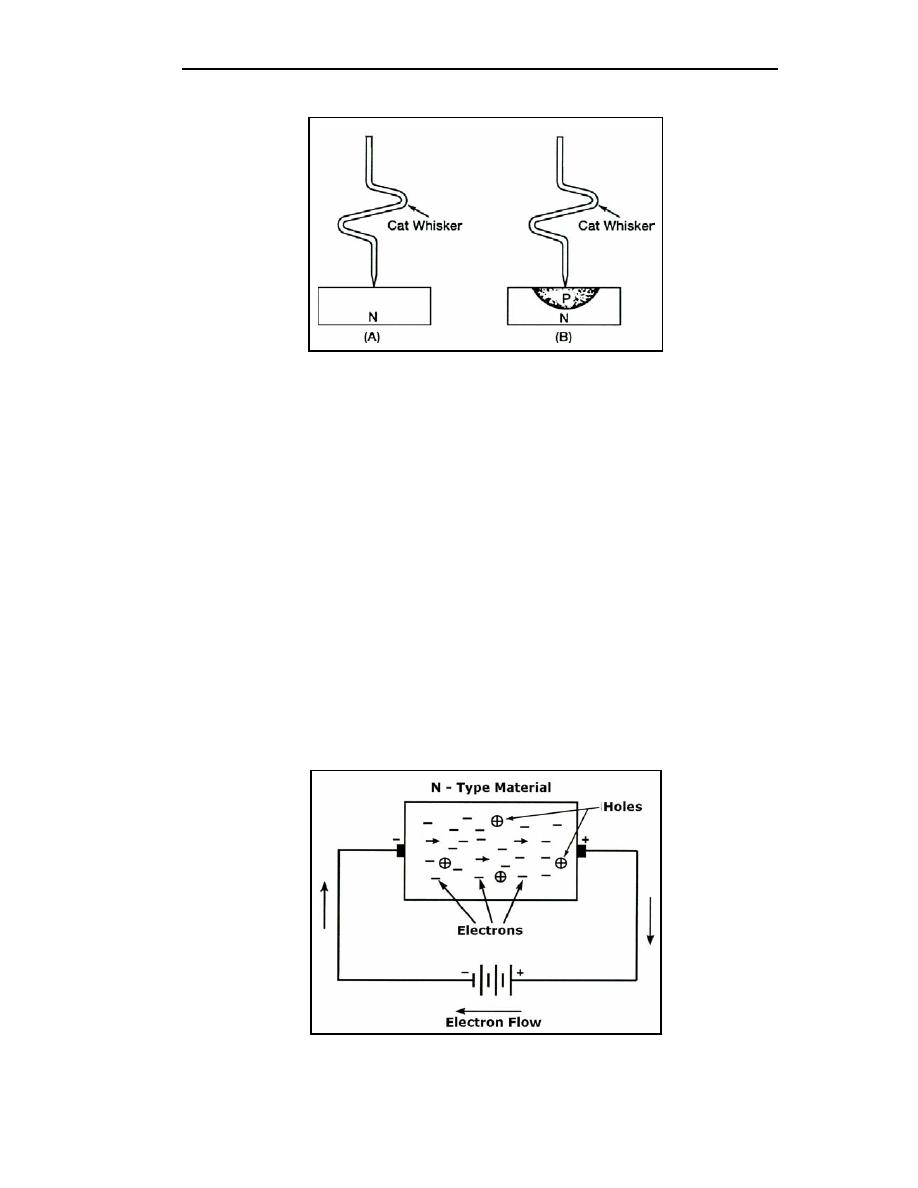
TC 9-62
Figure 1-14. Point-Contact Type of Diode Construction
PN JUNCTION OPERATION
1-61. We should now be familiar with P- and N-type materials, how these materials are
joined together to form a diode, and the function of the diode. However, before we can
understand how the PN junction works, we must first consider current flow in the materials
that make up the junction and then what happens initially within the junction when these
two materials are joined together.
Current Flow in the N-Type Material
1-62. Figure 1-15 shows the current flow through the N-type material. Conduction in the
N-type material of semiconductor, or crystal, is similar to conduction in a copper wire.
That is, with voltage applied across the material, electrons will move through the crystal
just as current would flow in a copper wire. The positive potential of the battery will attract
the free electrons in the crystal. These electrons will leave the crystal and flow into the
positive terminal of the battery. As an electron leaves the crystal, an electron from the
negative terminal of the battery will enter the crystal, thereby completing the current path.
Therefore, the majority current carriers in the N-type material (electrons) are repelled by
the negative side of the battery and move through the crystal toward the positive side of the
battery.
Figure 1-15. Current Flow in the N-Type Material
1-18
TC 9-62
23 June 2005



 Previous Page
Previous Page
